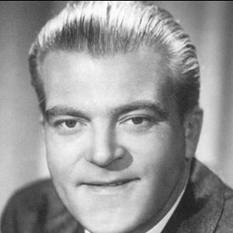
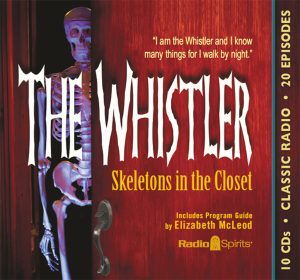 “I am the Whistler, and I know many things, for I walk by night. I know many strange tales, many secrets hidden in the hearts of men and women who have stepped into the shadows. Yes… I know the nameless terrors of which they dare not speak.”
“I am the Whistler, and I know many things, for I walk by night. I know many strange tales, many secrets hidden in the hearts of men and women who have stepped into the shadows. Yes… I know the nameless terrors of which they dare not speak.”
The Whistler (1942-55) aired “The Strange Sisters” on January 28, 1946 as the 192nd of its 760+ episodes (depending on how one counts). It is the 12th episode of the show we have run since 2017 and only the first since February of 2024, almost a year and a half ago. For newcomers, introductory background material on the show is reprised below (it was the most popular west coast radio show for many years), with the background providing context for its not totally unique but unusual narrative format.
There were two attempts for The Whistler to break into the east coast market that didn’t last long (July-September 1946, and March 1947-September 1948) due to mediocre ratings, so if these episodes are counted as part of the overall scheme of things, the total number of shows ends up somewhere around 769. Over its thirteen-year west coast run it never took a summer break and ran continuously, certainly some kind of record, and its sole west coast sponsor, Signal Gas & Oil remained loyal throughout. While the show had several narrators over the years, the one who held the longest tenure and is most associated with the show was Bill Forman (1915-1966, photo top right). Though Forman is the most recognized narrator for his work in 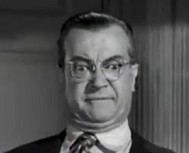
 most of its later years, two of the show’s earlier narrators would also become recognizable for both their radio work and television personalities, Joseph Kearns (1907-62, photo at left) being one and Gale Gordon (1906-95, photo at right) being the other. Kearns (as did Gordon) had a long radio career, and would win notoriety for his ability to mimic almost any voice. Combining his amazing vocal talent along with his acting chops, Kearns would find work in hundreds of episodes of radio shows prior to any TV work that came his way. The TV role he was most associated with was of course Dennis the Menace (1959-63), where he played Dennis’s grumpy old neighbor George Wilson. When Kearns died in February of 1962 he was replaced by none other than his long time radio pal Gale Gordon until the show left the air. Another bit of trivia is that Kearns also wrote at least one script for the show, showing once again that he was not only a capable actor with a rare voice talent but a writer as well.
most of its later years, two of the show’s earlier narrators would also become recognizable for both their radio work and television personalities, Joseph Kearns (1907-62, photo at left) being one and Gale Gordon (1906-95, photo at right) being the other. Kearns (as did Gordon) had a long radio career, and would win notoriety for his ability to mimic almost any voice. Combining his amazing vocal talent along with his acting chops, Kearns would find work in hundreds of episodes of radio shows prior to any TV work that came his way. The TV role he was most associated with was of course Dennis the Menace (1959-63), where he played Dennis’s grumpy old neighbor George Wilson. When Kearns died in February of 1962 he was replaced by none other than his long time radio pal Gale Gordon until the show left the air. Another bit of trivia is that Kearns also wrote at least one script for the show, showing once again that he was not only a capable actor with a rare voice talent but a writer as well.
The Whistler has an interesting backstory, and would take much too long to go into here to give it the justice it warrants. A few points of interest will suffice for this offering of the beloved mystery show, the first of which is the use of the narrator as more than just a host. From Jim Ramsburg’s Gold Time Radio entry on The Whistler: “Like The Shadow’s first personification a dozen years earlier, Inner Sanctum’s ghostly Raymond in 1941 and The Mysterious Traveler in 1943, The Whistler stood outside the stories he narrated. Unlike the others, he used a unique second-person, present tense technique as if to talk directly with the central character of his stories – often an innocent drawn into the plot by circumstances or an amateur driven to murder as a last resort.” A second point of interest has to do with the trademark whistling that opens each episode. From Radio Spirits’ Blog Archive on The Whistler: “The program featured one of radio’s classic openings: a haunting 13-note theme created by Wilbur Hatch (who also composed the show’s eerie mood music). Hatch estimated that only one person in twenty could whistle this exact melody, and for the show’s thirteen-year duration one person pretty much did—a young woman named Dorothy Roberts. In fact, during the war years, Roberts had to get permission from Lockheed (where she worked) to leave her factory job in order to make it to the program and whistle every week.”
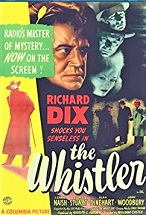
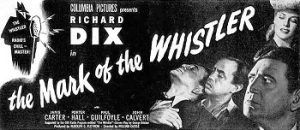
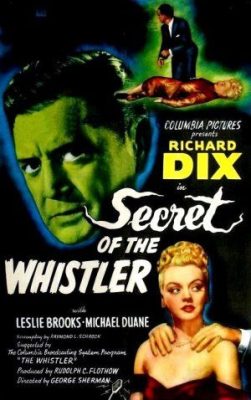
The radio show proved popular enough that Columbia Pictures made eight Whistler films from 1944-48, all but one starring Richard Dix: The Whistler (1944), The Mark of the Whistler (1944), The Power of the Whistler (1945), The Voice of the Whistler (1945), Mysterious Intruder (1946), The Secret of the Whistler (1946), The Thirteenth Hour (1947) and The Return of the Whistler (1948). The show was brought to early television in 1954-55, but never caught on. Nevertheless (and due in great measure to roughly 500 of the estimated 700+ original shows still surviving–-and the movies still showing up on classic movie TV channels), The Whistler probably enjoys a larger audience today than it did in its heyday during the Golden Age of Radio.
“The Strange Sisters” recalls in its own way Shakespeare’s Macbeth and its iconic Three Witches, also known as the Weird Sisters. In this story, however, the sisters don’t deal in prophecies but in lies, deception, and death, and it’s difficult at times to discern who is doing the lying, deceiving, or dying. The author has set up his tale nicely, with one sister being successful in life while another is jealous of her accomplishments, and a third who is naive and innocent. The backbiting and sibling rivalry reaches a fevered pitch when we add to the bubbling cauldron of emotions and dislike of one another the fact that their deceased father has left a will that of course at least one of them hates for not being bequeathed what she believes is her due of the family inheritance. We, as sympathetic listeners, try to form an empathy, an attachment to one character or another throughout this increasingly downhill tumble toward the inevitable reckoning, but the author cheats us this minor luxury more than once. This is to the author’s credit for it keeps the listener curious enough to hang around and learn how this gordian knot of motives and schemes unravels, providing at least a morally acceptable degree of closure to the fateful story of “The Strange Sisters.”
(The CD linked above includes this episode and 19 others.)
Play Time: 28:35
{“The Strange Sisters” aired on a Monday evening in late January of 1946. After fidgeting through another boring day at school, the next afternoon found the neighborhood gang at the corner newsstand searching for more stories full of murderous goings on the likes of which they had heard the night before in that scary episode of The Whistler. Black Mask (1920-1951) is known justifiably as the king of the detective pulps. It published many a classic story in the detective genre, probably none better known than its serialization of Dashiell Hammett’s famous novel The Maltese Falcon beginning in its September 1929 issue. It was a bi-monthly in 1946 though it managed to squeeze in a 7th issue in February between its January and March issues. Street & Smith’s Detective Story Magazine (1915-1949) was the first pulp magazine featuring nothing but detective fiction. From 1915-late 1932 it was a weekly publication; from late 1932-September of 1935 it was a bi-weekly effort, and from October 1935 until its last few issues in 1949 it was a solid monthly magazine, ending up with over 1,000 issues in its highly regarded 34-year lifespan. Thrilling Mystery Novel (1935-1951) started out as a weird menace magazine with the short title of Thrilling Mystery, but when that approach didn’t work out became a more conventional mystery magazine in 1945, changing its name to Thrilling Mystery Novels, and began publishing the odd number of 5 issues per year for the years 1945-47. From 1948 until its final lone issue in 1951 it was a quarterly.}
[Left: Black Mask, 1/46 – Center: S&S Detective Story, 1/46 – Right: Thrilling Mystery Novel, 1/46]
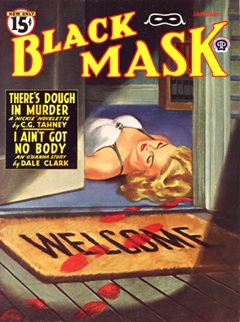
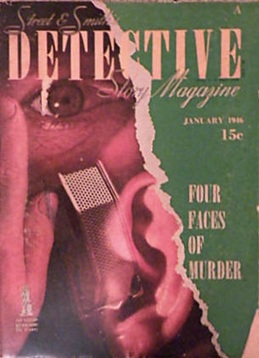
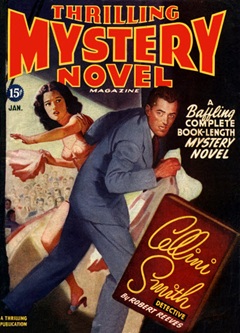
To view the entire list of Old Time Radio episodes at Tangent Online go here.